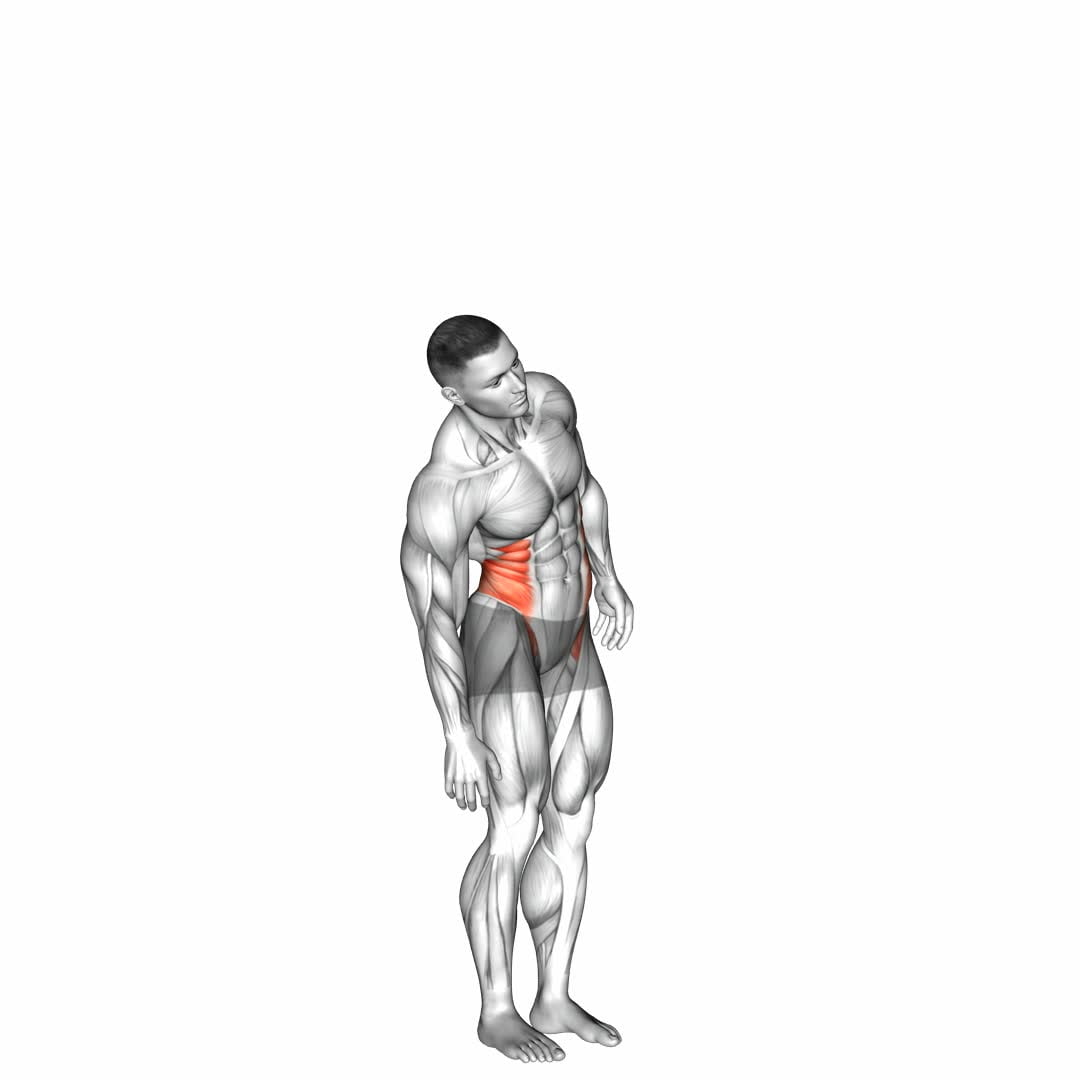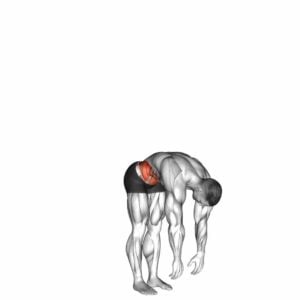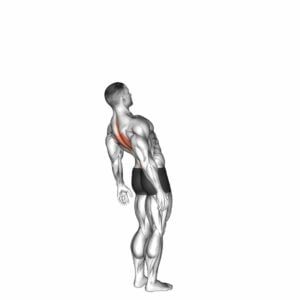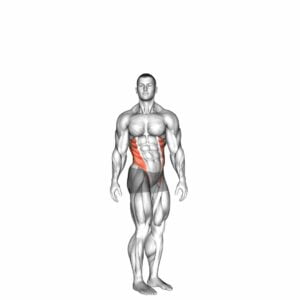Spine (Lumbar) – Lateral Flexion – Video Exercise Guide & Tips

In this video exercise guide, you'll learn all about lateral flexion of the spine (lumbar) and how it can benefit your workout routine.
Watch This Exercise Video
We'll show you the proper form and technique, as well as variations and modifications to suit your needs.
Avoiding common mistakes is key to a safe and effective workout, so we'll share some helpful tips to keep in mind.
Get ready to strengthen and stretch your spine with this informative video guide.
Let's get started!
Key Takeaways
- Strengthen and stretch muscles on the sides of the spine
- Target oblique muscles for stability and proper posture
- Improve core strength and stability, reducing the risk of injuries
- Increase flexibility of the spine for better range of motion
Benefits of Lateral Flexion
One major benefit of lateral flexion exercises is that they strengthen and stretch the muscles on the sides of your spine. These exercises target the muscles of your obliques, which play a crucial role in maintaining stability and proper posture. By strengthening these muscles, you can improve your overall core strength and stability, reducing the risk of injuries and improving your balance.
In addition to strengthening and stretching the muscles on the sides of your spine, lateral flexion exercises also help to increase the flexibility of your spine. This increased flexibility allows for better range of motion in your torso and can help to alleviate tightness and stiffness in the back. By incorporating lateral flexion exercises into your fitness routine, you can improve your overall flexibility and mobility, making it easier to perform daily activities and participate in sports or other physical activities.
Another important benefit of lateral flexion exercises is the impact they have on your posture. By strengthening the muscles on the sides of your spine, you can improve your spinal alignment and reduce the risk of developing poor posture habits. Good posture is essential for maintaining proper spinal alignment, reducing strain on the back, and preventing pain and discomfort. Incorporating lateral flexion exercises into your workout routine can help you achieve and maintain good posture, leading to improved overall spinal health.
Proper Form and Technique
How can you ensure proper form and technique during lateral flexion exercises for the spine?
Proper form and technique are crucial when performing stretching exercises and core strengthening techniques for lateral flexion. To ensure you're performing these exercises correctly, follow these guidelines:
- Start in a standing position with your feet shoulder-width apart and your knees slightly bent.
- Place your hands on your hips or behind your head, keeping your elbows out to the sides.
- Engage your core muscles by pulling your belly button towards your spine.
- Slowly bend your upper body to the side, keeping your hips and feet stable.
- Avoid twisting or rotating your body during the movement.
- Hold the stretch for 15-30 seconds, feeling a gentle pull on the opposite side of the stretch.
- Return to the starting position and repeat on the other side.
- Perform 2-3 sets of 10-15 repetitions on each side.
Variations and Modifications
To modify lateral flexion exercises for the spine, you can incorporate different equipment or adjust the range of motion. Here are some variations and modifications you can try:
- Equipment variations:
- Use a resistance band: Attach a resistance band to a fixed object and hold the other end in your hand as you perform lateral flexion. This adds resistance to the exercise, making it more challenging.
- Incorporate a stability ball: Sit on a stability ball and perform lateral flexion while maintaining your balance. This helps engage your core muscles even more.
- Range of motion modifications:
- Decrease the range of motion: If you find it difficult to perform lateral flexion with a full range of motion, start with smaller movements. Gradually increase the range of motion as you become more comfortable and stronger.
- Increase the range of motion: If you want to challenge yourself further, you can increase the range of motion by bending your spine even further sideways.
By incorporating these variations and modifications into your lateral flexion exercises, you can target different muscles and make the exercises more challenging. This will help you progress and achieve better results.
Now, let's move on to the next section and discuss some common mistakes to avoid when performing lateral flexion exercises.
Common Mistakes to Avoid
To avoid common mistakes, make sure you maintain proper form and engage the correct muscles during lateral flexion exercises. One of the most common mistakes people make is using momentum to swing their bodies from side to side, rather than using controlled movements. This not only takes away from the effectiveness of the exercise but also increases the risk of injury. To prevent this, focus on slow and controlled movements, ensuring that you're using the muscles in your spine to perform the lateral flexion.
Another common mistake is rounding the shoulders or hunching the back during the exercise. This can put unnecessary strain on the spine and increase the risk of injury. Instead, keep your shoulders back and down, and maintain a neutral spine throughout the movement.
Lastly, it's important to avoid overstretching or forcing the range of motion beyond what feels comfortable. Pushing too hard can lead to muscle strains or sprains. Listen to your body and only go as far as you can without experiencing pain or discomfort.
Tips for a Safe and Effective Workout
To ensure a safe and effective workout, continue to maintain proper form and engage the correct muscles during lateral flexion exercises. Pay attention to these additional tips:
- Gradually increase workout intensity: It's important to challenge yourself during your workout, but avoid pushing too hard too soon. Gradually increase the intensity of your lateral flexion exercises to prevent injuries and allow your muscles to adapt.
- Warm up and cool down properly: Before starting your workout, warm up your body with dynamic stretches and light cardio exercises. This helps prepare your muscles for the upcoming movements. After your workout, cool down with static stretches to improve flexibility and reduce muscle soreness.
- Stretch your entire body: Don't just focus on your spine during your warm-up and cool-down. Stretch out your entire body to improve overall mobility and reduce the risk of muscular imbalances.
- Listen to your body: Pay attention to any discomfort or pain during your lateral flexion exercises. If something doesn't feel right, modify the movement or stop altogether. It's better to be safe than sorry.
Frequently Asked Questions
Is Lateral Flexion Exercise Effective for Reducing Lower Back Pain?
Lateral flexion exercises can be effective for reducing lower back pain. However, individuals with lower back pain should be aware of potential risks associated with these exercises. It's important to consult with a healthcare professional before starting any exercise routine.
Additionally, combining lateral flexion exercises with other back strengthening exercises can provide added benefits for pain relief. By targeting multiple muscle groups, you can improve overall strength and stability in the back, reducing the likelihood of future pain episodes.
Can Lateral Flexion Exercises Help Improve Posture?
Lateral flexion exercises can definitely help improve your posture. By engaging the muscles along the side of your spine, these exercises promote overall flexibility and mobility, which are crucial for maintaining good posture.
To get the most out of lateral flexion exercises, make sure to execute them properly. Start by standing tall with your feet shoulder-width apart, then slowly bend sideways, focusing on stretching the muscles on the opposite side of the bend. Repeat on both sides for optimal results.
How Many Repetitions of Lateral Flexion Exercises Should I Do?
To properly perform lateral flexion exercises, start by standing with your feet shoulder-width apart. Place one hand on your hip and raise the other arm overhead. Slowly bend sideways towards the hand on your hip, feeling a stretch on the opposite side. Repeat this movement for a desired number of repetitions.
Incorporating lateral flexion exercises into your workout routine can help strengthen and stabilize your core muscles, improve flexibility, and enhance overall posture.
Is It Safe to Perform Lateral Flexion Exercises if I Have a History of Spinal Injuries?
If you have a history of spinal injuries, it's important to take precautions and make modifications when performing lateral flexion exercises.
While these exercises can provide benefits for overall spinal health, it's crucial to consult with a healthcare professional or a qualified trainer who can guide you through safe and appropriate exercises.
They can help you determine which movements are suitable for your specific condition and help minimize the risk of further injury.
Are There Any Alternative Exercises That Target the Same Muscles as Lateral Flexion?
Looking for alternative exercises that target the same muscles as lateral flexion? There are several options you can try.
- Side planks are a great way to engage your obliques and strengthen your core.
- Standing side bends can also help target the muscles involved in lateral flexion.
- Another option is the seated side bend, which can be done with a resistance band for added intensity.
Remember to consult with a professional before trying any new exercises to ensure they're safe for your specific condition.
Conclusion
In conclusion, lateral flexion exercises for the lumbar spine offer numerous benefits. These include improved flexibility, posture, and core strength. By maintaining proper form and technique, individuals can avoid common mistakes and enhance the effectiveness of their workouts.
With variations and modifications available, individuals can tailor their exercises to their fitness levels and goals. This allows for a personalized approach to training the lumbar spine. By following these tips and practicing safe workout habits, individuals can achieve a strong and healthy spine.
Overall, lateral flexion exercises provide a valuable addition to any fitness routine. They target the muscles of the lumbar spine and help to improve overall spinal health. Incorporating these exercises into a regular workout regimen can lead to a stronger and more functional back.

Author
Years ago, the spark of my life’s passion ignited in my mind the moment I stepped into the local gym for the first time. The inaugural bead of perspiration, the initial endeavor, the very first surge of endorphins, and a sense of pride that washed over me post-workout marked the beginning of my deep-seated interest in strength sports, fitness, and sports nutrition. This very curiosity blossomed rapidly into a profound fascination, propelling me to earn a Master’s degree in Physical Education from the Academy of Physical Education in Krakow, followed by a Sports Manager diploma from the Jagiellonian University. My journey of growth led me to gain more specialized qualifications, such as being a certified personal trainer with a focus on sports dietetics, a lifeguard, and an instructor for wellness and corrective gymnastics. Theoretical knowledge paired seamlessly with practical experience, reinforcing my belief that the transformation of individuals under my guidance was also a reflection of my personal growth. This belief holds true even today. Each day, I strive to push the boundaries and explore new realms. These realms gently elevate me to greater heights. The unique combination of passion for my field and the continuous quest for growth fuels my drive to break new ground.







